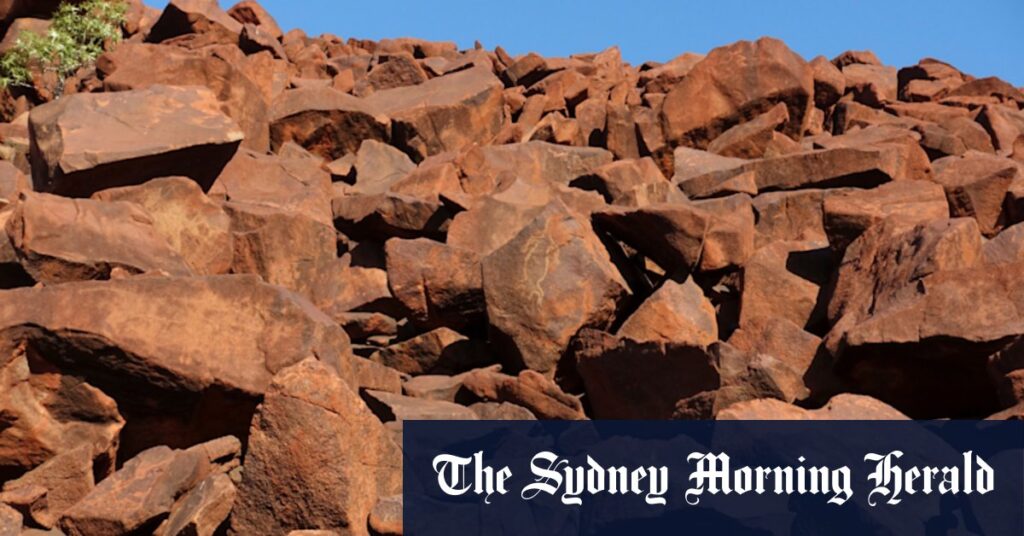The UNESCO committee included representatives from Kenya, Japan, Rwanda, Ukraine and other countries. It made its decision on Friday afternoon in Paris, shortly before midnight AEST.
Murujuga Aboriginal Corporation chairman Peter Hicks told the UNESCO committee that community elders began seeking the listing decades ago.
“They’re not here today; this is for them,” he said. “Today, we create our own stories in the stone – but with some care and protection of our culture, like our ancestors have always done for 50,000 years.”
The World Heritage Committee looked set to reject the Australian application in May this year when it issued a draft decision that raised concerns about industrial development around the Murujuga landscape.
The concerns matched those of environmental groups and some Indigenous leaders strongly opposed to the expansion of liquefied natural gas (LNG) production at Woodside’s facilities nearby. Rio Tinto and fertiliser giant Yara also have operations near the rock art.
More than one million petroglyphs cover the protected site that spans 5400 hectares, although thousands of examples of the art were destroyed from the 1960s onward in the industrial development.
Some petroglyphs depict people, birds, fish, turtles and the thylacine – the Tasmanian tiger. The site attracts about 35,000 tourists each year.
The Save Our Songlines group, including former Murujuga Aboriginal Corporation chair Raelene Cooper, have urged the state and federal governments to curb Woodside’s expansion to protect the Indigenous site.
“It is essential that the final UNESCO decision requires a moratorium on any extensions or expansions of industry located on Murujuga,” Cooper said in the days leading up to the outcome in Paris.
“It needs to have a decommissioning and rehabilitation plan, and to strengthen the management of Murujuga by traditional custodians by guaranteeing resources so industry funding is not relied upon.”
Loading
The UNESCO draft decision in May sought more time for the World Heritage nomination by sending it back to the federal government over concerns about industrial development.
Environment Minister Murray Watt angered the environmental movement in May by approving an extension of Woodside’s gas processing plant on the Burrup peninsula from 2030 to 2070.
Senator Watt lobbied members of the World Heritage Committee to approve the application despite the concerns in May, speaking to the meeting in Paris as member countries emphasised their worries about the industrial development.
The approval came with repeated comments from member countries about continued monitoring of pollution and the use of safeguards to prevent damage to the landscape.
Senator Watt said the UNESCO decision added a “layer of protection” to the site, which was already protected on an Australian heritage register.
“Now, getting World Heritage listing, that actually expands the footprint of the area that’s going to be protected under Australian law,” he said.
“In fact, it will now be three times the area compared to the current Murujuga landscape that will now gain environmental protection under Australian law.”
Get a note directly from our foreign correspondents on what’s making headlines around the world. Sign up for our weekly What in the World newsletter.
Read the full article here

